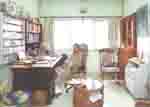 Sometimes, people have to choose between love and survival. Life, in its harshest reality, can bring one to the tormenting crossroads, where one is forced to choose between the love towards mother land, and the security of your loved ones in an unfamiliar territory. No matter how much we want to deny it, we cannot ultimately evade how political history can impact and shape our lives. The borders that were drawn in the Indian subcontinent in 1947 and 1971, were not just mere geographical lines on a map; they were lines that decided the fate of millions. Many had to let go of the familiar yards where they grew up and the house they knew as homes for generations in a moment’s notice.
Sometimes, people have to choose between love and survival. Life, in its harshest reality, can bring one to the tormenting crossroads, where one is forced to choose between the love towards mother land, and the security of your loved ones in an unfamiliar territory. No matter how much we want to deny it, we cannot ultimately evade how political history can impact and shape our lives. The borders that were drawn in the Indian subcontinent in 1947 and 1971, were not just mere geographical lines on a map; they were lines that decided the fate of millions. Many had to let go of the familiar yards where they grew up and the house they knew as homes for generations in a moment’s notice.
German photographer Thomas Meyer has photographed people who were forced to leave their motherland Bangladesh during the partitions of 1947 and 1971. Exile in Calcutta, an ongoing photography exhibition at Drik Gallery at Dhanmondi, features photos of Meyer where he captured Bengalis who had fled from Bangladesh, but driven by the necessity of life, learned to call Kolkata their new home.
Like many other regions across the world, mass exile took place in Bengal in 1947 when the contemporary British government divided the region into two parts—Pakistan and India. Millions of people fled and hundreds of thousands were driven away from their birthplace because of the resultant unrest of the partition. Similar incidences of ‘migration’ also happened during the fateful days of the war of independence in 1971.
In the images on display at the exhibition titled Exile in Calcutta, Meyer has framed 18 people living in Calcutta, whose roots lie in the present territory of Bangladesh. The images also include quotes of the individuals about what migration means to them and what the pre-migration and post-migration places mean, the trauma of being rendered homeless and also about the challenges of adjusting to a new place.
The list of émigrés includes people from different stratum of life and society such as security guards, government officials, painters, writers, and other professions. One of the photographed people is Sunil Uddham Mondol, a security guard, who left the then East Pakistan in 1970. Even after 44 years of living in Calcutta, Mondol still misses Bangladesh. He says, ‘Even though I feel independent and secure in my new homeland, I don’t feel anything for Calcutta.’
However, exile to Calcutta was like opening of a new horizon to some people. One such individual is Eleena Banik, a painter, who says, ‘My parents came to Calcutta just before the unrest that preceded the division of Bengal. I don’t feel a need to see their homeland.’
Recently demised noted writer Sunil Gangopadhyay was also among the refugees who fled to Kolkata during the partition. However, Sunil considered the decision as the right one and he admitted, ‘My father’s decision to come to Calcutta was very wise and most of our family members got benefitted.
Began on April 15, the exhibition will be open for everybody from 3:00 to 8:00pm till April 21.
-With New Age input




















